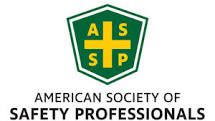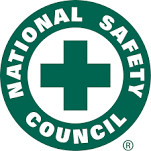Why Behavior Drives Compliance More Than Policy
Safety programs typically fail long before an incident occurs. The policies are documented, the procedures are available, and the responsibilities are defined. Yet unsafe behaviors continue - especially within contractor workforces that rotate frequently, arrive with varying levels of training, and operate under inconsistent oversight.
For EHS, Risk, and Operations leaders, the real issue is not whether policies exist. It is whether people apply them. That gap between written expectations and real-world behavior remains one of the largest contributors to preventable injuries, compliance deficiencies, and operational disruptions.
While regulatory standards such as OSHA requirements, EMR, safety statistics, and certificates of insurance (COIs) remain essential, they do not explain why well-documented programs still produce inconsistent outcomes. The differentiator is human behavior - how workers perceive risk, how supervisors reinforce expectations, and how contractors implement their programs day to day.
FIRST, VERIFY’s role is to provide structure, documentation verification, and ongoing oversight so that safety expectations are not only stated but consistently followed across your contractor base.
Why Policies Alone Do Not Change Behavior
Most organizations have adequate policies. What they lack is consistent implementation. Several behavioral factors contribute to this gap:
- Low risk perception. Routine tasks reduce hazard awareness, leading to shortcuts.
- Cognitive biases. Workers overestimate experience and underestimate danger.
- Supervisor influence. Inconsistent enforcement signals that rules are optional.
- Training variability. Contractors arrive with different standards, formats, and verification practices.
- Time pressure. Competing operational priorities lead to procedural drift.
These human factors influence safety performance more directly than documentation alone. Without systems that verify comprehension, training, and real-world application, even strong policies fail to translate into safe behavior.
Where Contractor Programs Break Down
Behavioral issues are often amplified in contractor environments because of gaps in:
- Prequalification consistency
- Verification of safety program implementation
- Documentation of employee training
- Enforcement practices
- Orientation tracking
- COI accuracy and renewal management
- Annual program updates
- Supervisor observation and corrective action
Many organizations rely heavily on self-reporting or broad safety statistics, both of which fail to confirm whether a contractor’s internal program is functioning as represented.
This leads to predictable operational risks: delayed projects, OSHA findings, invoice holds, poor audit outcomes, and increased liability exposure.
The Behavioral Impact of Inconsistent Training & Documentation
Safety compliance training is effective only when it is:
- Current
- Accurate
- Verified
- Documented
- Reinforced
- Applied
When contractor training records are incomplete, outdated, or unverifiable, workers enter facilities with unknown levels of competency. This problem often goes unnoticed until an incident occurs and by then, the documentation gap becomes a compliance liability.
Behavior-based safety (BBS) emphasizes observation, reinforcement, and correction. But without verified training, orientation completion, or documentation of disciplinary action, behavioral expectations cannot be enforced reliably.
How FIRST, VERIFY Strengthens Safety Behavior Through Verifica-tion
FIRST, VERIFY addresses the behavioral side of safety by ensuring contractors can document - not just declare - the implementation of their safety programs.
1. Standardized, Verification-Based Prequalification
Before a contractor is considered qualified, FIRST, VERIFY can review:
- OSHA and EMR data
- Required training documentation
- Insurance coverage and COIs
- Evidence of comprehension and implementation
- Supervisor observation practices
- Disciplinary and enforcement procedures
This establishes a consistent baseline across all contractors, and reduces reliance on self-reported claims.
2. Remote Audits Focused on Real-World Application
Unlike programs that focus on wording in a safety manual, FIRST, VERIFY remote audits evaluate the documentation that reflects actual behavior:
- Training records matched to job functions
- Documentation of ongoing observation
- Incident investigation procedures
- Enforcement records
- Frequency of safety meetings
- Implementation of written programs
This method identifies whether contractors are effectively managing safety - not just whether they maintain a policy.
3. Safety Orientation Hosting and Onsite/Offsite
Behavior improves when expectations are reinforced before work begins. The system provides:
- Verified orientation completion
- Pass/fail results and documentation
- Compliance status visible at check-in
- Automated reminders for renewals
This ensures every worker onsite meets the same behavioral and compliance expectations.
Improving Safety Behavior Across Contractor Teams
Organizations can strengthen safety behavior by focusing on the following areas:
- Verification, not assumptions. Require supporting documents for all program claims.
- Consistency. Standardize prequalification criteria across all locations.
- Reinforcement. Ensure orientation materials reflect current risks and procedures.
- Supervisor alignment. Require documented observation and corrective action.
- Annual or rotating remote audits. Confirm that programs remain active and enforced.
- Centralized tracking. Maintain accessible documentation for training, COIs, and compliance status.
These steps reduce variability and elevate the behavioral expectations placed on contractors.
The Outcome: Policies Backed by Predictable Behavior
When organizations combine behavioral insight with systematic verification, they gain:
- Better decision-making at the point of work
- Increased compliance consistency
- Reduced incident rates
- Improved audit outcomes
- Higher-quality contractor performance
- Stronger alignment between Safety, Procurement, and Operations
Behavior - not policy - determines safety outcomes. Verification ensures that behavior aligns with your standards.
Strengthen Safety Behavior Through Verified Compliance
If you want to ensure your contractors not only maintain proper documentation but also demonstrate consistent implementation of their safety programs, FIRST, VERIFY provides the structure needed to close the behavioral gap.
Learn more at
www.firstverify.com
or request a demonstration.






